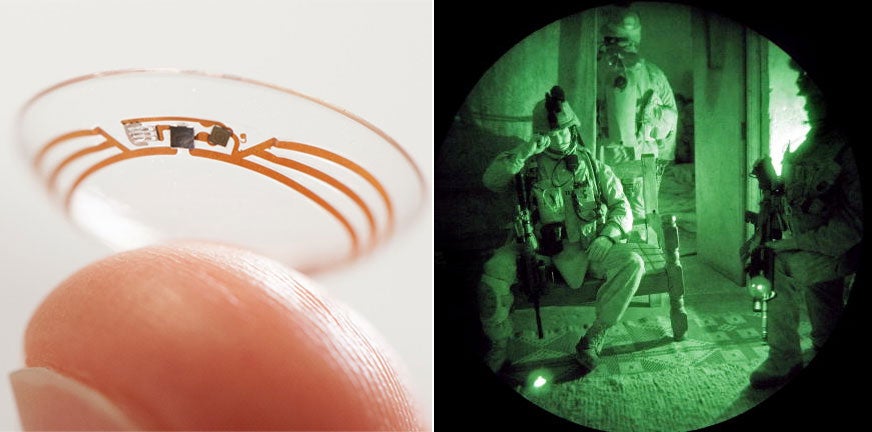Contact lenses with night vision could be on the way thanks to graphene breakthrough
Lenses made from the atom-thick 'wonder material' could be used in phones or even contact lenses to make night vision available for all

Your support helps us to tell the story
From reproductive rights to climate change to Big Tech, The Independent is on the ground when the story is developing. Whether it's investigating the financials of Elon Musk's pro-Trump PAC or producing our latest documentary, 'The A Word', which shines a light on the American women fighting for reproductive rights, we know how important it is to parse out the facts from the messaging.
At such a critical moment in US history, we need reporters on the ground. Your donation allows us to keep sending journalists to speak to both sides of the story.
The Independent is trusted by Americans across the entire political spectrum. And unlike many other quality news outlets, we choose not to lock Americans out of our reporting and analysis with paywalls. We believe quality journalism should be available to everyone, paid for by those who can afford it.
Your support makes all the difference.Night vision technology has been around for a while, but it's only really used by professionals (or professional creeps) due to its prohibitive size.
But what if night vision was something you could fit into a pair of contact lenses? You could keep a pair in your bag to slip in if you were going to be walking home alone in the dark, or even use them to take a night-time jaunt through a forest without spooking all the animals.
All this and more could be possible in the future thanks to a new development by researchers in the US using graphene lenses to sense “the full infrared spectrum” plus visible and ultraviolet light.
"We can make the entire design super-thin," said Zhaohui Zhong, assistant professor of electrical and computer engineering at the University of Michigan. "It can be stacked on a contact lens or integrated with a cell phone."
Current night vision technology needs bulky cooling equipment to stop the detectors getting confused by their own heat radiation, but the graphene-based models can do the same job using just a few layers of the atom-thick material.
The most effective night vision technology works by capturing the infrared portion of the light spectrum – this is the part that is emitted as heat by objects, instead of reflected as light.

Zhong suggests that the infrared-capturing graphene lenses could therefore be used for more than just night vision. The technology could help doctors monitor blood flow without having to move a patient or subject them to any scans, or be used by art historians to examine layers of paint underneath the surface. It’s not quite X-ray vision but it’s pretty damn close.
Previous attempts to use graphene in this way have suffered from the material’s insensitivity towards parts of the light spectrum. The team from Michigan’s breakthrough was to create a sandwich of layers, with an insulating barrier placed between two slices of graphene and an electrical current sent through the bottom part.
When the infrared light hits the top layer of graphene it dislodges electrons as normal (this is, in effect, the signal that gets ‘seen’ by the eye) a process that is then amplified by the electrical current. And hey presto (or some other, more scientific, phrase) you get night vision.
“Our work pioneered a new way to detect light,” said Zhong. “We envision that people will be able to adopt this same mechanism in other material and device platforms.”
Contact lenses seem to be a consistent draw for technologists looking to augment human ability – most likely due to their inconspicuous nature – and previous efforts in this area have included Google’s prototype that monitors blood sugar, and a contact lens that has optical zoom.
Join our commenting forum
Join thought-provoking conversations, follow other Independent readers and see their replies
Comments